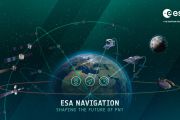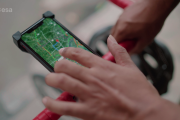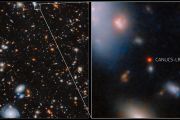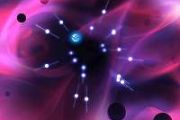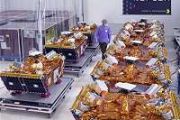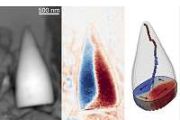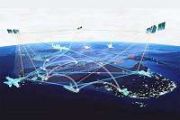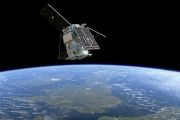
Copernical Team
ESA plays alien in art project pondering life beyond Earth

Light shining through a wall experiment searches for dark matter
 An international research team is employing an innovative approach to detect elusive, extremely light new elementary particles, known as axions or axion-like particles, using the Any Light Particle Search (ALPS) experiment. This groundbreaking experiment leverages twenty-four repurposed superconducting magnets from the HERA accelerator, intense laser beams, precision interferometry, and highly s
An international research team is employing an innovative approach to detect elusive, extremely light new elementary particles, known as axions or axion-like particles, using the Any Light Particle Search (ALPS) experiment. This groundbreaking experiment leverages twenty-four repurposed superconducting magnets from the HERA accelerator, intense laser beams, precision interferometry, and highly s MAHLI works the night shift: Sols 3837-3838
 Earth planning date: Monday, May 22, 2023- Curiosity successfully wrapped up the "Ubajara" drill campaign over the weekend with some imaging of the drill tailings. This Monday, we are planning two sols (Mars days) of activities to finish up at Ubajara before driving off in the coming sols. Most targeted science today is focused on bedrock target "Apetina," which is situated on the same block as
Earth planning date: Monday, May 22, 2023- Curiosity successfully wrapped up the "Ubajara" drill campaign over the weekend with some imaging of the drill tailings. This Monday, we are planning two sols (Mars days) of activities to finish up at Ubajara before driving off in the coming sols. Most targeted science today is focused on bedrock target "Apetina," which is situated on the same block as Mars rover Zhurong finds evidence of water at red planet's low latitudes
 China's Mars rover Zhurong has provided key observational evidence of liquid water at low Martian latitudes, the warmest regions on the red planet, according to a new study published in the journal Science Advances this week.
Previous studies found evidence of a large amount of liquid water on early Mars, but dramatic climate changes led to very low pressure and water vapor content, making
China's Mars rover Zhurong has provided key observational evidence of liquid water at low Martian latitudes, the warmest regions on the red planet, according to a new study published in the journal Science Advances this week.
Previous studies found evidence of a large amount of liquid water on early Mars, but dramatic climate changes led to very low pressure and water vapor content, making Planet announces AI Partnerships at GEOINT 2023
 Planet Labs PBC (NYSE: PL), a leading provider of daily data and insights about Earth, has announced new strategic partnerships with artificial intelligence (AI) analytics providers at the U.S. Geospatial Intelligence Foundation's 2023 GEOINT Symposium. These companies' AI-powered analytics enable object detection and classification services on top of Planet's high-frequency, medium- and high-re
Planet Labs PBC (NYSE: PL), a leading provider of daily data and insights about Earth, has announced new strategic partnerships with artificial intelligence (AI) analytics providers at the U.S. Geospatial Intelligence Foundation's 2023 GEOINT Symposium. These companies' AI-powered analytics enable object detection and classification services on top of Planet's high-frequency, medium- and high-re Tonga underwater volcano disrupted satellite signals halfway around the world
 An international team has used satellite- and ground-based ionospheric observations to demonstrate that an air pressure wave triggered by volcanic eruptions could produce an equatorial plasma bubble (EPB) in the ionosphere, severely disrupting satellite-based communications. Their findings were published in the journal Scientific Reports.
The ionosphere is the region of the Earth's upper a
An international team has used satellite- and ground-based ionospheric observations to demonstrate that an air pressure wave triggered by volcanic eruptions could produce an equatorial plasma bubble (EPB) in the ionosphere, severely disrupting satellite-based communications. Their findings were published in the journal Scientific Reports.
The ionosphere is the region of the Earth's upper a SmartSat targets Australian agricultural intelligence from space
 SmartSat Cooperative Research Centre (CRC), Australia's leading space research centre, has launched a new research program, 'Maya Nula', to develop Australian satellite Earth Observation (EO) capability with space sensor technology to advance Australia's agriculture industry.
The name Maya Nula, which translates to "eyes here, there, everywhere" in the Dharug language of the Eora nation, a
SmartSat Cooperative Research Centre (CRC), Australia's leading space research centre, has launched a new research program, 'Maya Nula', to develop Australian satellite Earth Observation (EO) capability with space sensor technology to advance Australia's agriculture industry.
The name Maya Nula, which translates to "eyes here, there, everywhere" in the Dharug language of the Eora nation, a Iridium adds to constellation resilience with launch of spare satellites
 Iridium Communications Inc. (NASDAQ: IRDM) has announced a key milestone in its long-term constellation resilience and redundancy planning, with the successful launch and deployment of five spare satellites. This launch brings the total number of spare Iridium satellites on orbit to 14. In total, 81 next-generation Iridium satellites were built, and 80 of them have now been deployed. The Iridium
Iridium Communications Inc. (NASDAQ: IRDM) has announced a key milestone in its long-term constellation resilience and redundancy planning, with the successful launch and deployment of five spare satellites. This launch brings the total number of spare Iridium satellites on orbit to 14. In total, 81 next-generation Iridium satellites were built, and 80 of them have now been deployed. The Iridium Has Gaia found missing link in black hole evolution
 When ESA's Gaia spacecraft scanned the Scorpius constellation and its ancient globular star cluster Messier 4, it captured something strange: a huge dark blob at the cluster's centre, 800 times more massive than our Sun.
It is normal for globular clusters to have dark centres made up of many dead stars. But the mass at the centre of Messier 4 looks different - despite being especially larg
When ESA's Gaia spacecraft scanned the Scorpius constellation and its ancient globular star cluster Messier 4, it captured something strange: a huge dark blob at the cluster's centre, 800 times more massive than our Sun.
It is normal for globular clusters to have dark centres made up of many dead stars. But the mass at the centre of Messier 4 looks different - despite being especially larg 
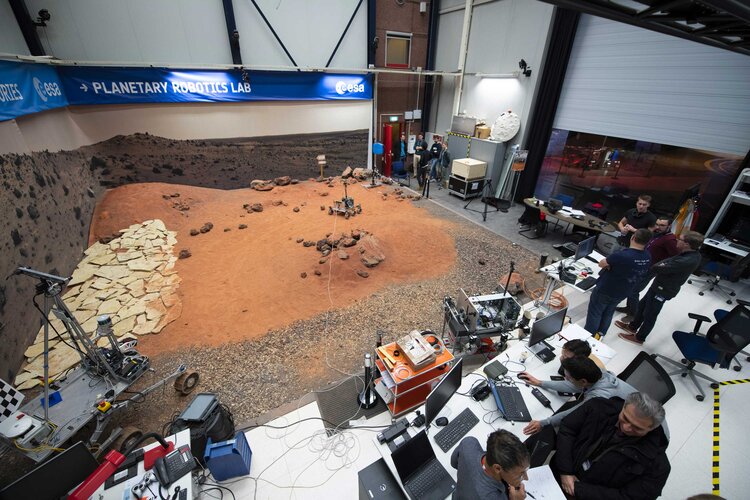 Image:
Mars corner
Image:
Mars corner 



